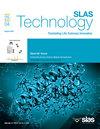精神分裂症患者脑磁共振成像特征与发病相关基因的关系
IF 3.7
4区 医学
Q3 BIOCHEMICAL RESEARCH METHODS
引用次数: 0
摘要
背景:精神分裂症是一种复杂的神经发育障碍,其发病机制尚未完全阐明。本文旨在通过分析SCH患者的脑磁共振成像(MRI)特征及相关基因表达模式,揭示疾病特异性脑结构和功能变化及其潜在的遗传基础。方法:对GSE48072数据集中SCH组与NC组之间的差异表达基因(differential expression genes, DEGs)进行鉴定和功能分析,构建蛋白-蛋白相互作用(protein-protein interaction, PPI)网络筛选核心基因(CGs)。同时,利用来自COBRE、Human Connectome Project (HCP)、1000 Functional Connectome Project (FCP)和Consortium for Reliability and Reproducibility (CoRR)的MRI数据,采用3D deep aggregation network (3D DANet)机器学习方法,探讨SCH患者和NC组之间大脑活动模式的差异。对所识别的cg与MRI成像特征进行相关性分析。结果:从GSE48072数据集中收集了82个deg,主要涉及细胞毒性颗粒,生长因子结合和移植物抗宿主病途径。构建的PPI网络显示,KLRD1、KLRF1、CD244、GZMH、GZMA、GZMB、PRF1和SLAMF6为CGs。在四个数据集上,SCH患者在额顶叶注意网络(FAN)和默认模式网络(DMN)中表现出相对增强的活动模式,而在其他大多数网络中表现出减弱的趋势。3D DANet在脑图像分类中表现出更高的准确性、特异性和敏感性。DMN的增强与基因异常之间的相关性最强,其次是额叶和顶叶注意网络的增强。相比之下,感觉-运动网络和枕部网络的减弱与基因异常的相关性相对较弱。MRI特征与KLRD1和CD244基因之间的相关性最强。结论:颗粒酶介导的程序性细胞死亡信号通路与SCH的发病机制有关,CD244可能是诊断SCH的潜在生物学标志物。DMN的增强与遗传异常的相关性最强,其次是额叶和顶叶注意网络的增强。相比之下,感觉-运动网络和枕部网络的减弱与基因异常的相关性相对较弱。此外,MRI特征与KLRD1和CD244基因之间的相关性最强。3D DANet方法的使用提高了SCH患者脑结构和功能变化的检测精度,为了解疾病的生物学基础提供了新的视角。本文章由计算机程序翻译,如有差异,请以英文原文为准。
Association of the characteristics of brain magnetic resonance imaging with genes related to disease onset in schizophrenia patients
Background
Schizophrenia (SCH) is a complex neurodevelopmental disorder, whose pathogenesis is not fully elucidated. This article aims to reveal disease-specific brain structural and functional changes and their potential genetic basis by analyzing the characteristics of brain magnetic resonance imaging (MRI) in SCH patients and related gene expression patterns. Methods: Differentially expressed genes (DEGs) between SCH and healthy control (NC) groups in the GSE48072 dataset were identified and functionally analyzed, and a protein-protein interaction (PPI) network was fabricated to screen for core genes (CGs). Meanwhile, MRI data from the COBRE, the Human Connectome Project (HCP), the 1000 Functional Connectomes Project (FCP), and the Consortium for Reliability and Reproducibility (CoRR) were utilized to explore differences in brain activity patterns between SCH patients and NC group using a 3D deep aggregation network (3D DANet) machine learning approach. A correlation analysis was performed between the identified CGs and MRI imaging characteristics. Results: 82 DEGs were collected from the GSE48072 dataset, primarily involved in cytotoxic granules, growth factor binding, and graft-versus-host disease pathways. The construction of the PPI network revealed KLRD1, KLRF1, CD244, GZMH, GZMA, GZMB, PRF1, and SLAMF6 as CGs. SCH patients exhibited relatively enhanced activity patterns in the frontoparietal attention network (FAN) and default mode network (DMN) across four datasets, while showing a trend of weakening in most other networks. The 3D DANet demonstrated higher accuracy, specificity, and sensitivity in brain image classification. The correlation between enhancement of the DMN and genetic abnormalities was the strongest, followed by the enhancement of the frontal and parietal attention networks. In contrast, the correlation between the weakening of the sensory-motor network and occipital network and genetic abnormalities was relatively weak. The strongest correlation was observed between MRI characteristics and the KLRD1 and CD244 genes. Conclusion: The granzyme-mediated programmed cell death signaling pathway is related to pathogenesis of SCH, and CD244 may serve as potential biological markers for diagnosing SCH. The correlation between enhancement of the DMN and genetic abnormalities was the strongest, followed by the enhancement of the frontal and parietal attention networks. In contrast, the correlation between weakening of the sensory-motor network and occipital network and genetic abnormalities was relatively weak. Additionally, the strongest correlation was observed between MRI features and the KLRD1 and CD244 genes. The use of the 3D DANet method has improved the detection precision of brain structural and functional changes in SCH patients, providing a new perspective for understanding the biological basis of the disease.
求助全文
通过发布文献求助,成功后即可免费获取论文全文。
去求助
来源期刊

SLAS Technology
Computer Science-Computer Science Applications
CiteScore
6.30
自引率
7.40%
发文量
47
审稿时长
106 days
期刊介绍:
SLAS Technology emphasizes scientific and technical advances that enable and improve life sciences research and development; drug-delivery; diagnostics; biomedical and molecular imaging; and personalized and precision medicine. This includes high-throughput and other laboratory automation technologies; micro/nanotechnologies; analytical, separation and quantitative techniques; synthetic chemistry and biology; informatics (data analysis, statistics, bio, genomic and chemoinformatics); and more.
 求助内容:
求助内容: 应助结果提醒方式:
应助结果提醒方式:


